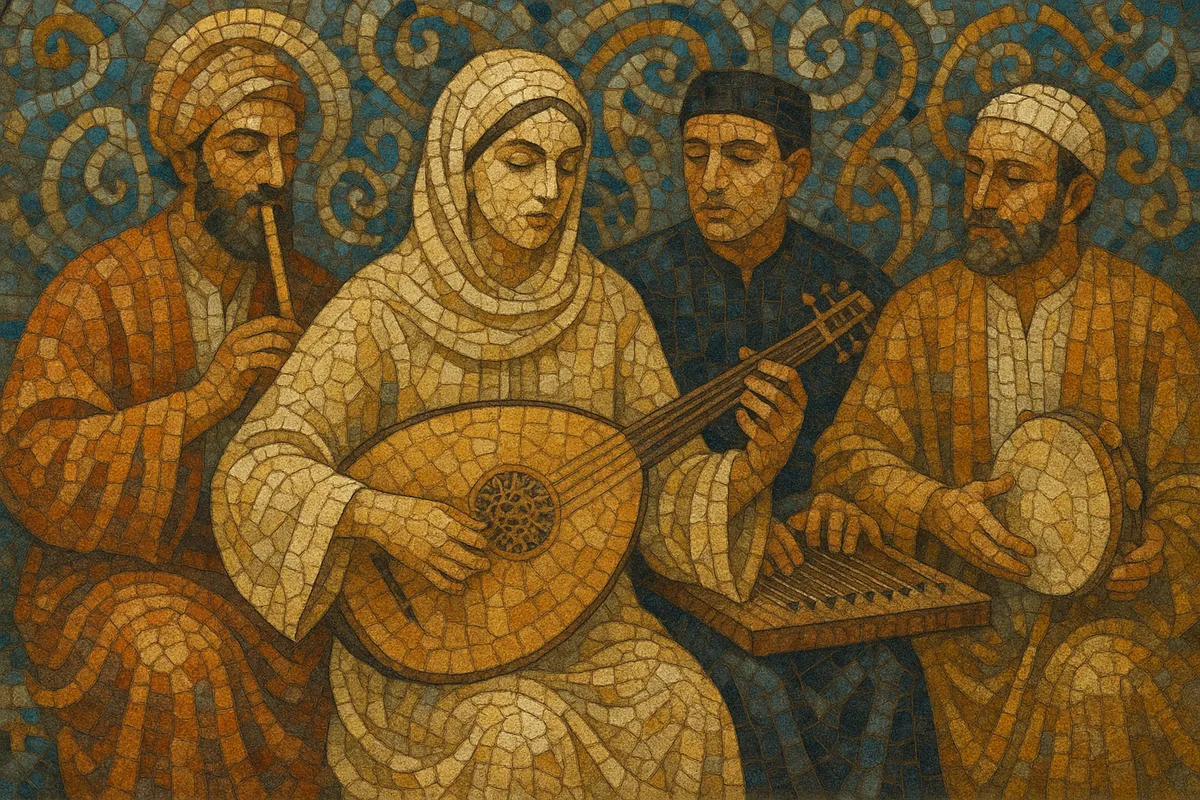Arabic classical music is the art-music tradition of the Arabic-speaking world, built on the modal system of maqam and cyclical rhythmic modes called iqaʿat.
It prioritizes ornate melody, nuanced intonation (including microtonal intervals), heterophonic ensemble texture, and a balance between composed forms and improvisation (taqsim). Core forms include the samaʿi (often in 10/8), longa (2/4), dulab (short prelude), muwashshah (strophic song), and the wasla (a multi-movement suite). The aesthetic of tarab—emotional ecstasy and deep musical rapture—guides performance and listening.
Typical instruments include the ʿūd (fretless lute), qānūn (plucked zither), nay (end-blown flute), violin/kamanja, riqq (tambourine), and darbuka/tabla, often assembled as a takht (chamber ensemble) or, in later periods, the larger firqa (orchestra).
Arabic classical music coalesced during the Abbasid era in Baghdad (present-day Iraq). Court patronage, urban salon culture, and scholarly translation movements connected Arab musicians with Hellenistic theory (notably Pythagorean/Aristoxenian ideas), Byzantine liturgy, and Persian court traditions. Early theorists such as al-Kindi and al-Farabi documented scales, intervals, and aesthetics that informed a distinctly Arabic art-music.
The maqam concept matured alongside treatises by al-Farabi and Safi al-Din al-Urmawi, who codified intervallic structures, melodic pathways (sayr), and rhythmic cycles (iqaʿat). Repertoires of instrumental preludes, vocal qasida settings, and proto-suites circulated among courts and urban centers from Iraq and the Levant to Egypt and al-Andalus (via figures like Ziryab).
Through shifting imperial centers and trade networks, Arabic classical practice interacted intensively with Persian and Ottoman art musics, sharing modal families, forms (e.g., samaʿi, bashraf/peşrev), and performance practice while retaining Arabic poetic and melodic identity. Localized schools thrived in Aleppo, Cairo, and other cities, preserving muwashshahat and sacred/semi-sacred repertoires.
An Arab cultural renaissance (Nahda) fostered new urban conservatories, notated anthologies, and public concerts. In Egypt and Greater Syria, composers and singer-instrumentalists refined the wasla suite and strophic song forms. Cairo emerged as a recording and broadcasting hub, standardizing ensemble roles (takht → firqa) and widening audiences across the region.
Composers and iconic performers—Umm Kulthum, Mohamed Abdel Wahab, Riyad al-Sunbati, Farid al-Atrash, Sabah Fakhri—expanded orchestration while keeping maqam logic and tarab aesthetics central. Radio, cinema, and records disseminated the style, influencing neighboring traditions and modern Arabic popular genres. Today, conservatories, archival projects, and revival ensembles sustain both historical practice and contemporary creativity.


